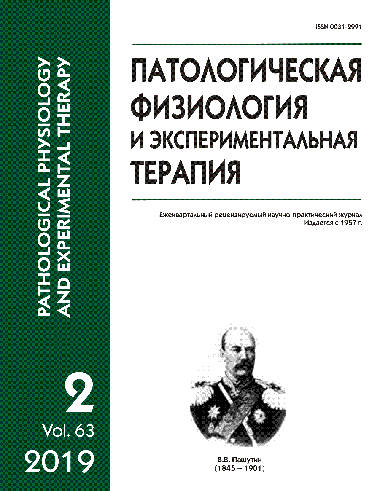Relationship of glycated hemoglobin with the rhythm-inotropic myocardial response in patients with ischemic heart disease associated with type 2 diabetes mellitus
Keywords:
type 2 diabetes, ischemic heart disease glycated hemoglobin
Abstract
The risk of heart rhythm disturbance increases in type 2 diabetes mellitus. However, significance of high hyperglycemia for altered excitability and disordered intracellular calcium transport in cardiomyocytes has not been adequately studied. Aim. To study the relationship between the level of glycated hemoglobin and the rhythm-inotropic myocardial response of patients with coronary heart disease associated with type 2 diabetes mellitus. Methods. The study was performed on isolated trabeculae from right atrium appendages obtained from patients during a coronary artery bypass surgery. The concentration of glycated hemoglobin (HbA1c) was measured in blood withdrawn before the operation. The inotropic response of isolated trabeculae to an extrasystole-inducing stimulus was studied. The stimulus was applied at 0.2-1.5 s after the onset of regular contractions under stimulation at a frequency of 0.5 Hz. Results. In the studied cohort, clinical and anamnestic indices were similar except for the HbA1c concentration. Myocardial excitability was higher in patients with HbA1c >8% than in patients with HbA1c <8%. Conclusion. In patients with HbA1c <8%, the cardiomyocyte sarcolemma membrane was electrically more stable than in patients with HbA1c >8%.Downloads
Download data is not yet available.
Published
27-05-2019
How to Cite
Budnikova O. V., Afanasyev S. A., Kondratieva D. S., Vorozhtsova I. N., Akhmedov S. D., Shipulin V. M. Relationship of glycated hemoglobin with the rhythm-inotropic myocardial response in patients with ischemic heart disease associated with type 2 diabetes mellitus // Patologicheskaya Fiziologiya i Eksperimental’naya Terapiya (Pathological physiology and experimental therapy). 2019. VOL. 63. № 2. PP. 34–40.
Issue
Section
Original research






